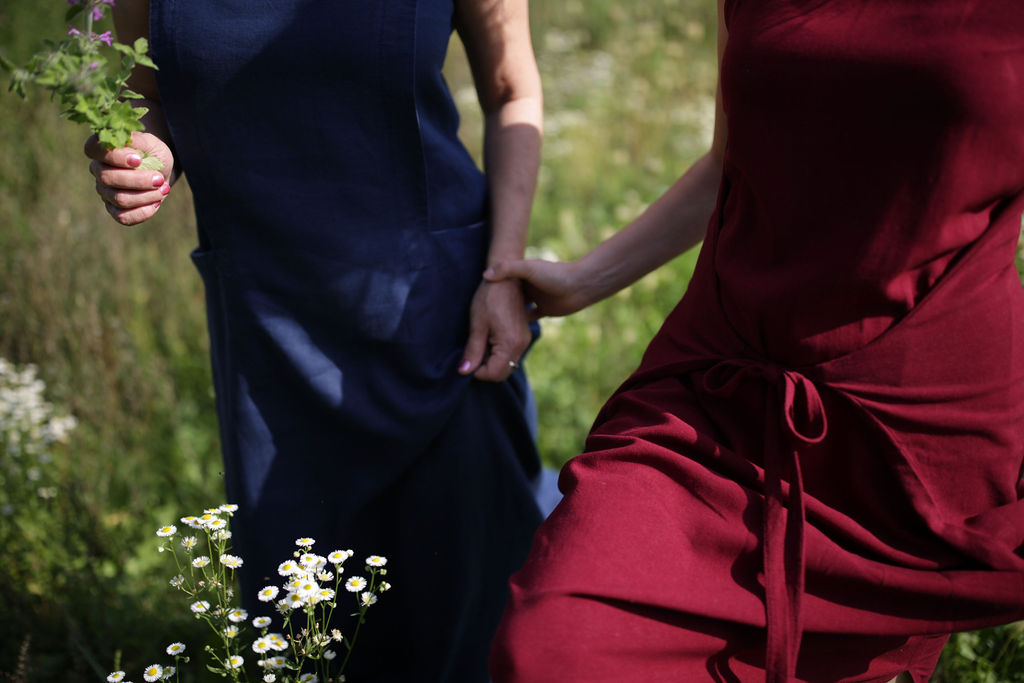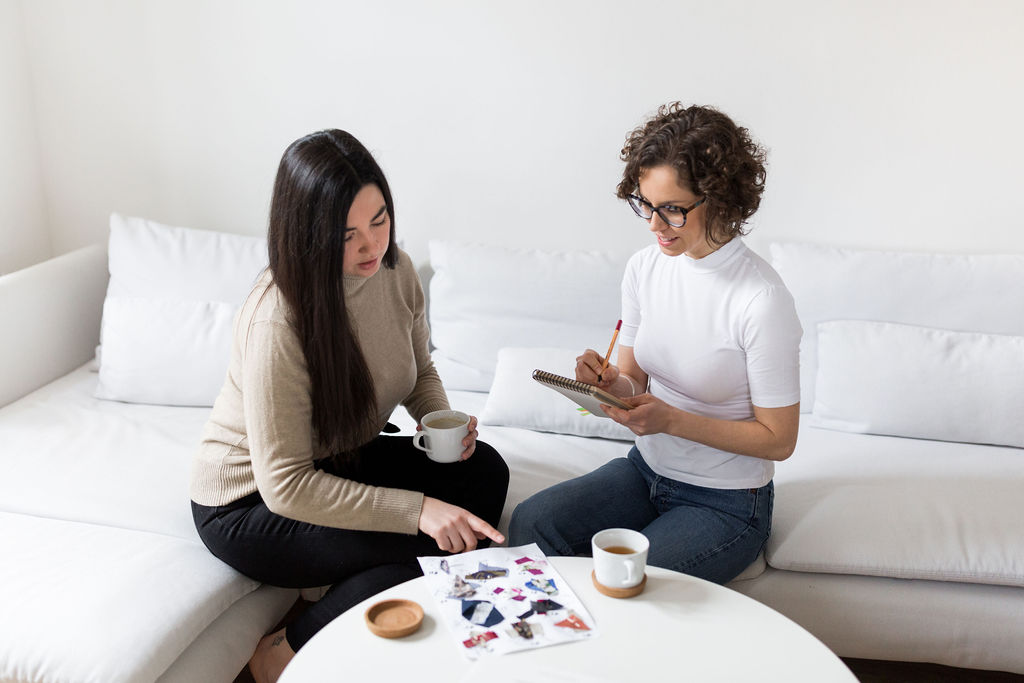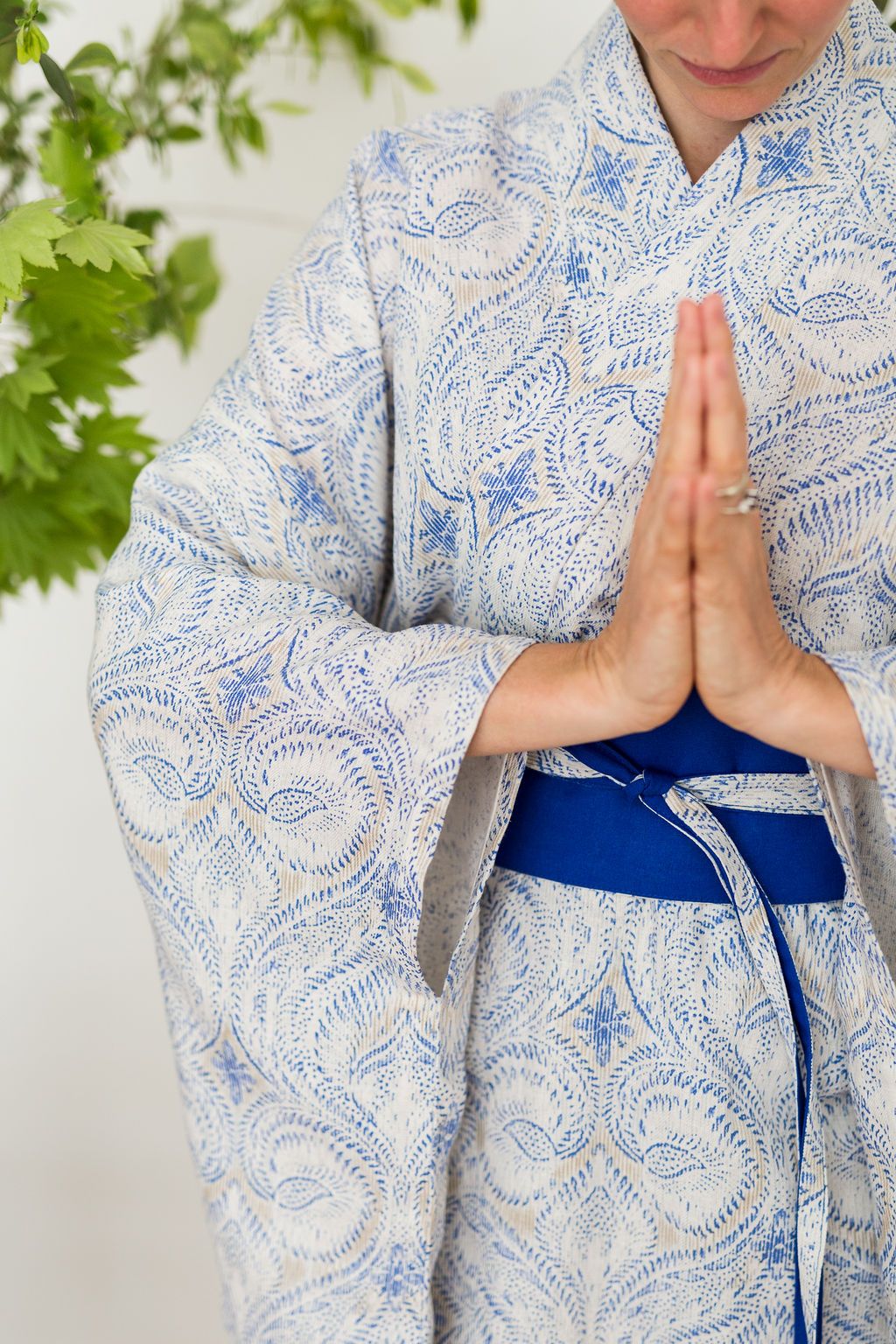Creating beautiful Kimonos with natural fabrics

Veronika Řehák Balson
In this issue, we spoke with Veronika, the co-founder of PURPLY, about her mission to make every woman who looks at the mirror happier through her kimonos.
Veronika has a business and international management degree. As a child, she practiced Japanese martial art called jiu-jitsu and fell in love with the culture, philosophy, and kimonos. Two years ago, Veronika founded PURPLY with her mother to produce beautiful Kimonos from luxury natural materials.
How did your journey to sustainable textile start?
When it comes to choosing the right material, we talk a lot about the environment. If you ask me what is the best we can do for the environment in the fashion industry, I would say look at what you already have in your closets because it is already out in the value chain and it has a lot of work, energy, and resources put into it already.
Sustainability as a topic is more of a whole cycle that has many different aspects. For me, it has often been used as a generic word. It's always difficult to say what is good and what is not just by using the word ‘sustainable’. So, I prefer to be more specific and use the wording that we use— luxury 'natural fabrics' in our case.
We started PURPLY with the main motivation to allow women to feel beautiful and confident in their bodies by wearing kimonos. This can only happen when the materials react according to the needs of our bodies. With natural fabrics, we have this luxury.
How did your interest in Kimonos start?
The inspiration for kimonos came from an American designer, Eileen Fisher. When I saw one of her jackets, it reminded me of Kimonos and that got clicked with my previous experience of martial arts. I then asked my mother if she could help me create one.
This was how it all kind of started. At the moment, we produce small quantities and let the designs find the customers and vice-versa. So every piece you buy, it's unique.
What is unique about PURPLY?
PURPLY is not just a company, it is a response to the specific need of women to feel comfortable in their bodies. This traditional garment carries refinement, feminine elegance, and incredible comfort. For generations, wrapping clothing has served all groups of societies across continents and we are now bringing them in a modern twist.
We use luxury natural materials, such as cell or brocades, sometimes linen or rami, which are similar and more native to Asia. Some of our materials come with certifications like an organic certificate that add additional value.
The materials we use are very functional and durable. They can last a long time and the fact that our kimonos have a wrapping that adjusts to the body means that they can last longer as our body changes as well. And it's also quite easy to combine with the rest of the closet— as many combinations as you want.
So for us, it's about how many times within a year you will wear that Kimono and how is it gonna feel on your body, how it's gonna react to your body and adjust to your body. Most importantly, how comfortable and beautiful you can feel in it.

How do you make your Kimonos last longer?
One way of making Kimonos last longer is to use luxury natural materials. And we should know how to take care of it so that the fibers are not damaged or destroyed. Most of us don’t think about this but it is important to know how to store and fold. It all matters.
I offer a workshop, where I help people connect to understand fashion and fabrics. It's very important because if you invest in something costly and luxurious, then you have to learn to utilize it properly. You also need to know how to take care of it.
My workshop takes people on a journey to understand the fabrics they are wearing. I touch upon the way these materials are produced and explain the whole stages from the seed to the growing soil water to harvesting, to the way it is produced. Then comes labeling, packaging, distributing, wearing, and then up to the end of closing the cycle. It's a whole process.
So can you tell me more about your workshop?
It is an interactive and practical workshop that lasts five hours. Within these five hours, you will understand and be able to differentiate materials and their origin, whether they are chemical or natural or plant-based materials, or animal-based materials. We'll also understand where they come from and how they are created.
The workshop also gives some tips for producers or sellers that are specialized in producing either the fabric or the product from natural fibers. It's very practical and it's very interactive with a quiz. We also learn to sense, touch, and hear the sound of the fabrics, and understand their meaning.
At the end of the workshop, you will be able to walk back to your closet or second-hand shop, or luxury shop and be able to navigate yourself through the portfolio, the prices, and the materials so that you can make a better choice for yourself.
I offer this workshop in English and Czech.

How many items do you produce at a time?
There are no big volumes. My mother is the main designer. So, the whole production work depends on her availability. Then they come to our sewers. We consider our budget, everyone’s availability, materials availability, and the design conception.
We don't have a summer, spring, autumn, or winter collection. We just produce what we want to produce with the fabric we have and with our aesthetics and our gut feeling. Our Kimonos are timeless.
What are your challenges at the moment?
I am currently working on building my team because I have another job to pay my bills. With the team, I can work on taking our Kimonos to the next level.
It's been a slight challenge for me because I'm an emotional person and whatever I do, I do with my emotions and heart. That's also probably the reason why I was working alone until now, only with my mother but our company has reached the point where we need a team or a way of cooperation.
Now I have to learn how to coordinate everything with everyone to get the result and I also have to learn to be a manager but it's a process and it comes with time.
The next challenge is taking two different jobs simultaneously forward. Sometimes it's difficult to switch mentally. I put in a lot of effort but at the end of the day, I don't save much.
Can you give us some tips on how we can tell which materials are good while shopping?
It's always best practice to ask the shop assistant if they know more about the material, where it comes from and what functions the material has. If you are in a good shop with good people, they will tell you because they know.
If they don't know it, you can try to see or notice some of the usual stuff. Like, if you go to the fitting rooms, and the material is itchy or it's getting some kind of damage then you already know that this is going to get worse.
Look at the quality of sewing as well. And another thing is that if you have a certain high-quality garment, sometimes they are sewed by hand. Some small details consist of cleaning the edges— check if they are perfect. That will also tell you a lot about how it was produced.

Your tips for growing a company?
I get that question a lot, and I think the best answer for me is— just start! There's not gonna be perfect condition. There's not gonna be perfect finance. There's not gonna be a perfect team. There's not gonna be perfect outcomes. Nothing's gonna be perfect.
There's always gonna be difficulty, challenges, not a good situation, either personal or financial or professional. But I think if you start, you learn, you fail, you cry, you continue. Then slowly but surely you can see something positive following you. This is entrepreneurship. This is a startup world.
What are your plans for the next 5 years?
I only plan a bit within a year and a half but my ultimate goal is to help every woman be happier with their bodies. So for women, if we can have that feeling of being beautiful wearing our kimonos or our garment, it's a mission accomplished. So we feel within five years I want more of these women.
I want an army of women to feel happy, confident, and strong. In terms of business-wise within five years, I would like to make a profit and sustain a company financially. I would like to have retail where women can go and spend time with us.
I would also like to move to more custom production. At the moment we are only operating in the Czech Republic and we are doing some tests in Slovakia. But it will take some time until operations are manageable and the team is ready. We have no investor but we are planning crowdfunding soon within a year. That will be announced on our website and Instagram.



